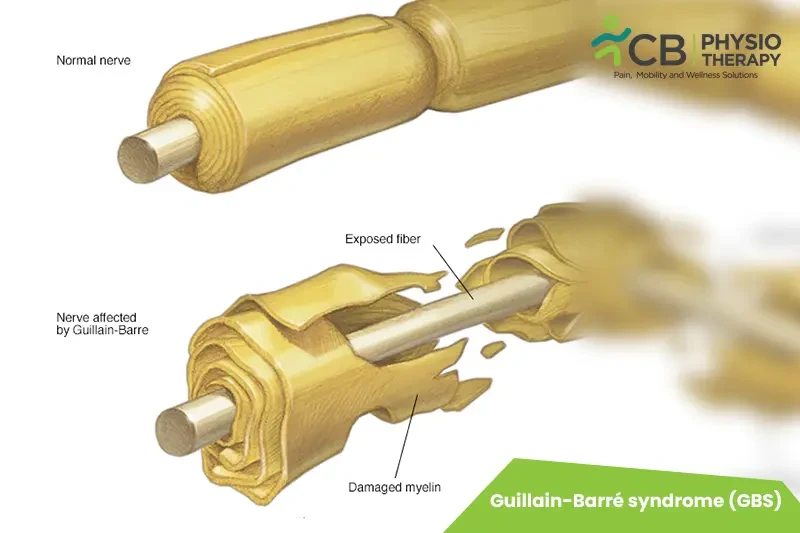The symptoms of Guillain-Barré syndrome (GBS) can develop over the course of several days to several weeks and typically start in the feet or legs before progressing to the arms and upper body. The hallmark symptom of GBS is muscle weakness that can be accompanied by other neurological symptoms, such as:
- Tingling or numbness in the hands and feet
- Loss of reflexes in the arms and legs
- Difficulty with eye movement, facial movement, chewing or swallowing
- Difficulty speaking or slurred speech
- Rapid heart rate or changes in blood pressure
- Difficulty breathing, which may require the use of a ventilator
- Severe pain in the back, arms, or legs
The symptoms of GBS can range from mild to severe, with some people experiencing only minor weakness or tingling, while others may become completely paralyzed and require hospitalization. In most cases, the symptoms peak within 2-4 weeks, after which they begin to improve, but recovery can take several months to a year, and some people may experience long-term weakness, fatigue, or other complications.
PathologyThe pathology of Guillain-Barré syndrome (GBS) involves an autoimmune attack on the peripheral nerves, which are the nerves that transmit messages from the brain and spinal cord to the rest of the body. The immune response in GBS primarily targets the myelin sheath, which is the protective covering around the nerves. As a result, the myelin sheath is damaged, leading to a condition known as demyelination. This damage interferes with the normal transmission of nerve impulses, resulting in the symptoms of GBS, such as muscle weakness, tingling, and numbness.
